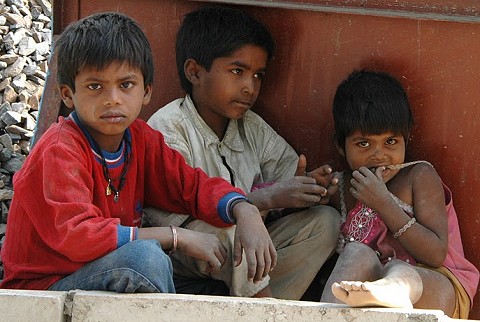Once every five years, the hunted gets to hunt in a democracy. As a member of the larger group with a one-off chance to make it count, I find it an invaluable opportunity that cannot be missed. We get access to decision makers and they are also under obligation to answer our questions.
Topping the list of questions is the one listed below which every political party should be mandated to answer in their manifesto. This question will not only reveal their social sensitivity and connection with grass-roots India, but will also throw light on their economic ideology with loud and unambiguous precision. ‘What is their per capita expenditure limit for defining poverty line in India and how did they arrive at it?’
When the government and Planning Commission announced a year back that poverty in India had been dramatically reduced over the last ten years, it was met with scepticism by the general public. Political parties in the Opposition lost no time in running down the government for using unrealistic figures to measure poverty and ridiculed the entire exercise.
To get this dialogue going, political parties could first state their views on the current poverty line numbers used by the Planning Commission, which is Rs.4080 for a family of five living in rural areas and increases to Rs.5000 for urban locations. This translates to per capita expenditure of Rs.27 and Rs.33 per day in rural and urban areas respectively.
Since absolute numbers do not always communicate meaningfully, we need to relate it to what it measures to get some clarity on its reasonableness. An expenditure limit that covers only the cost of food can define a ‘penury line’, which is also needed, but not the poverty line.
Poverty vs penury
Children in India, 2012, a report of the Government of India, highlights the shameful fact that 48 percent of our children below the age of 5 are stunted, that is, too short for their age, which indicates chronic or continuing malnutrition. Further one in five children face acute or severe malnutrition, which is evidenced by wasting, a reflection that they do not get adequate calories to maintain their weight.
A defined Penury Line can bifurcate our population into the well-fed and the ill-fed groups. This is definitely a level that we need to define in India. Maybe we should become the first country to define and address penury head on. After all, India is home to the largest number of malnourished children.
48 per cent of children in India show signs of chronic or continuing malnutrition, according to a report from the Government of India. Pic: R Kalden/Wikimedia
If our political parties feel India cannot afford the resources to address this crying need, we should shamelessly beg for global resources to eradicate this crime of child malnutrition in India. No child should be condemned to life in a stunted and wasting body as the prize for being born an Indian.
Starting with the Penury Line, we can build further by adding the cost of clothing and shelter to food. We would still not reach the poverty line, as we need to take into account not only the cost of food, clothing and shelter but also basic needs for a humane existence, such as water and power for lighting. This obviously excludes the cost of elementary education, as it is provided free to every Indian child being a fundamental right.
What is the gap between the currently used poverty line, as defined by the Planning Commission, and a realistic poverty line? One can get an idea of the magnitude of this gap by observing the budget allocations made by governments for meeting food requirements of people in their custody. In the recent state budget presented by the Karnataka Government, per day food allocation for prisoners in jails was increased from Rs.48 to Rs.75, an increase of Rs.27.
Viewed differently, the amount of increase in food allocation per day for a prisoner is equal to the poverty line limit set by the Planning Commission for a person living in rural India! Does this not reveal the whole story behind why India is home to the largest number of children with malnutrition?
Knowing the answer and acting on it are very different things. Can we take the first step by asking our political parties to specify their own definitions of the Poverty Line and share with us the basis on which they arrived at it? This could then be the start of a process to eradicate malnutrition among children in India and give every Indian child the opportunity to realize their true potential, and in the process create a true democracy.

























